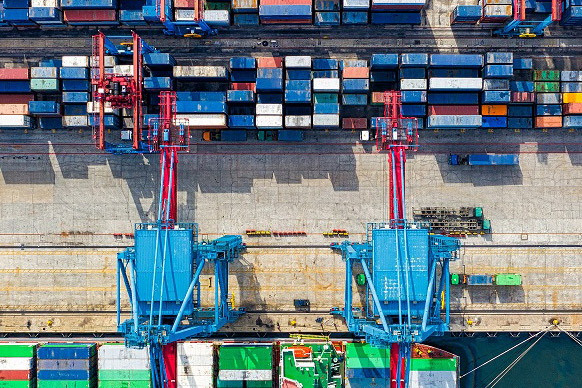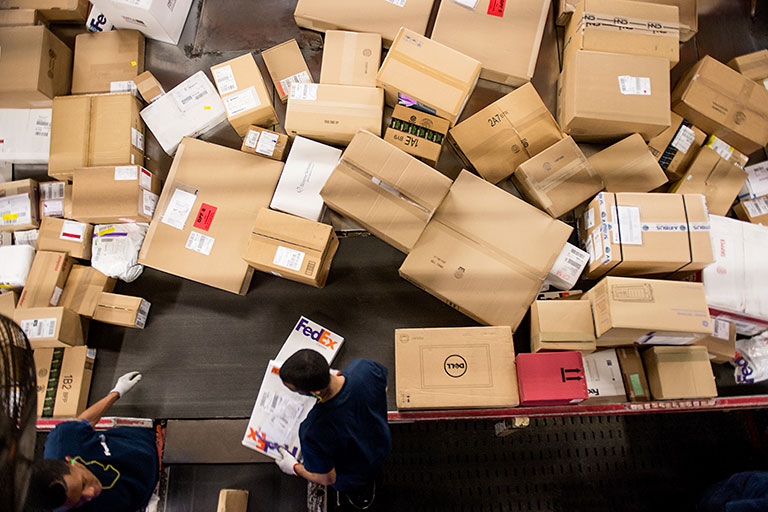How Cross-border Shipping Can Take Your Business Global (Part 1)
Cross-border shipping offers flexible ways to expand into new markets. Here’s how to achieve faster time-to-market and low set-up costs.
Southeast Asia has become a hotbed for e-commerce expansion with its mobile-first population and rising middle class. The region’s e-commerce market is expected to reach US$ 200 billion by 2025, a fourfold increase from its 2017 market size of US$ 50 billion.
In this article, we will briefly go through Southeast Asia’s e-commerce opportunities and why you should consider cross-border shipping to meet the region’s growing demand.
In this article, we will briefly go through Southeast Asia’s e-commerce opportunities and why you should consider cross-border shipping to meet the region’s growing demand.
The southeast Asian opportunity
There are multiple trends driving Southeast Asia’s growth in the e-commerce market place, increasing internet penetration via smartphones and a rising middle class of young people aged under forty means there are now more people online who have more money to spend. In addition, there is a shortage of major retail establishments like shopping malls in many areas.
These trends lead them to look for a wider variety of higher quality of goods and services online. People also prefer overseas online stores for better service such as free shipping and product return services. This can be seen in countries like Indonesia and Vietnam.
Indonesia has the largest population in Southeast Asia, estimated at 269.4 million people in 2019, of which fifty percent of them are connected to the internet. Out of this, 28.07 million Indonesians purchased US$ 7.05 billion in e-commerce sales in 2017. McKinsey predicts that e-commerce sales in Indonesia will grow up to eight times to reach US$ 55 – 65 billion in 2022.
Vietnam has an estimated population of 97.4 million in 2019, of which sixty-seven percent are connected to the internet. Out of this population, there are 35.08 million online shoppers who purchased US$ 2.26 billion in e-commerce sales in 2018. This number is expected to grow to over US$ 4 billion in 2022. Vietnam’s opportunity lies in its high conversion rate with fifty percent of online shopping searches resulting in a sale.
Considering the size of the opportunity, finding a way to fulfill demand from overseas markets is worth considering. In order to fulfill this demand, we will look into cross-border shipping and local distribution models.
These trends lead them to look for a wider variety of higher quality of goods and services online. People also prefer overseas online stores for better service such as free shipping and product return services. This can be seen in countries like Indonesia and Vietnam.
Indonesia has the largest population in Southeast Asia, estimated at 269.4 million people in 2019, of which fifty percent of them are connected to the internet. Out of this, 28.07 million Indonesians purchased US$ 7.05 billion in e-commerce sales in 2017. McKinsey predicts that e-commerce sales in Indonesia will grow up to eight times to reach US$ 55 – 65 billion in 2022.
Vietnam has an estimated population of 97.4 million in 2019, of which sixty-seven percent are connected to the internet. Out of this population, there are 35.08 million online shoppers who purchased US$ 2.26 billion in e-commerce sales in 2018. This number is expected to grow to over US$ 4 billion in 2022. Vietnam’s opportunity lies in its high conversion rate with fifty percent of online shopping searches resulting in a sale.
Considering the size of the opportunity, finding a way to fulfill demand from overseas markets is worth considering. In order to fulfill this demand, we will look into cross-border shipping and local distribution models.
Cross-border shipping or local distribution?
Cross-border shipping occurs when goods are transported from one country to the next, with no inventory being stored in the destination country. The goods will go through customs and import duties may have to be paid depending on existing trade agreements. In the case of cross-border e-commerce, cross-border shipping only needs to occur when a sale has been made.
As an alternative to cross-border shipping, creating a traditional local distribution model involves setting up warehouses and managing fleets to manage deliveries in the destination country. Often, this is done to reduce shipping when orders arrive as the inventory is kept closer to the country. It is vital to estimate demand carefully to prevent stock-outs or oversupply.
As an alternative to cross-border shipping, creating a traditional local distribution model involves setting up warehouses and managing fleets to manage deliveries in the destination country. Often, this is done to reduce shipping when orders arrive as the inventory is kept closer to the country. It is vital to estimate demand carefully to prevent stock-outs or oversupply.
Inventory exposure and initial investment required
Holding on to inventory at any given moment involves certain risks. This risk is known as inventory exposure, which comes from inventory storage costs, spoilage costs, and obsolescence. Setting up logistics systems in other countries also involves initial investments in operations like warehousing.
While it is tempting to keep inventory closer to your customers, creating your own local distribution model requires a lot of initial investment. Setting up and maintaining offices, import licenses, and warehousing to handle your inventory is an expensive investment. In addition to this, each component mentioned could lead to higher operating expenditure compared to cross-border shipping. This could be risky if demand for your item turns out lower than anticipated.
In addition to the high initial investment, each component mentioned could lead to higher storage costs and operating expenditure in the target country compared to cross-border shipping. This results in inventory exposure in that market, which is risky if demand for your item turns out lower than anticipated.
With the cross-border shipping model, your inventory exposure will not be as high as a local distribution model if you run a centralized logistics model. This is because storage costs are incurred only in the origin or hub country with a centralized logistics model.
On top of that, shipping costs are only incurred when sales have been made when using a cross-border shipping model. Therefore, you’ll have guaranteed revenue on each parcel that you ship to the target country. This makes cross-border shipping a cheaper and more flexible logistics option when initially entering new markets.
Your inventory will run the risk of becoming obsolete with either model, so it is vital that you have strong data to estimate demand in your target country. It could be a good idea to test demand via cross-border shipping first before making any heavy investment commitments when you are expanding to new markets.
While it is tempting to keep inventory closer to your customers, creating your own local distribution model requires a lot of initial investment. Setting up and maintaining offices, import licenses, and warehousing to handle your inventory is an expensive investment. In addition to this, each component mentioned could lead to higher operating expenditure compared to cross-border shipping. This could be risky if demand for your item turns out lower than anticipated.
In addition to the high initial investment, each component mentioned could lead to higher storage costs and operating expenditure in the target country compared to cross-border shipping. This results in inventory exposure in that market, which is risky if demand for your item turns out lower than anticipated.
With the cross-border shipping model, your inventory exposure will not be as high as a local distribution model if you run a centralized logistics model. This is because storage costs are incurred only in the origin or hub country with a centralized logistics model.
On top of that, shipping costs are only incurred when sales have been made when using a cross-border shipping model. Therefore, you’ll have guaranteed revenue on each parcel that you ship to the target country. This makes cross-border shipping a cheaper and more flexible logistics option when initially entering new markets.
Your inventory will run the risk of becoming obsolete with either model, so it is vital that you have strong data to estimate demand in your target country. It could be a good idea to test demand via cross-border shipping first before making any heavy investment commitments when you are expanding to new markets.
Speed of deployment
Using a local distribution model can involve high amounts of initial lead time. In some countries it could take around six months before you obtain your import license that is compulsory for a local distribution model. You’ll also need more time to establish teams, warehouses, and fleets. This slower time-to-market could cost you potential sales.
Existing cross-border shipping partners have logistical infrastructure, licenses, and expertise already in place. This can reduce logistics set-up time to that of researching the right partners and registering with them, improving the time-to-market for your products which is key in a fast-paced environment.
Existing cross-border shipping partners have logistical infrastructure, licenses, and expertise already in place. This can reduce logistics set-up time to that of researching the right partners and registering with them, improving the time-to-market for your products which is key in a fast-paced environment.
Geographical reach
Local distribution models are usually limited to the geographical area the hub is situated in, and setting up additional supply lines to rural areas will take time. This could slow down sales expansion plans.
By using cross-border shipping, your goods can reach even rural parts of various target countries depending on how extensive your cross-border fulfillment partner’s network is. By registering with the right partner, you will have access to multiple countries with relatively short set-up time.
By using cross-border shipping, your goods can reach even rural parts of various target countries depending on how extensive your cross-border fulfillment partner’s network is. By registering with the right partner, you will have access to multiple countries with relatively short set-up time.
A good way to test demand in new markets
With its lower initial investment, faster time-to-market, and potential geographical reach, cross-border shipping offers a flexible and effective way of serving the region. As a result, cross-border shipping is more suitable for testing demand in the market compared to using a traditional local distribution model.
***
This article was originally posted on Janio Asia ’s blog.



















 The Latest
The Latest